BORN IN
BLOOD
BORN IN BLOOD
THE LOST SECRETS
OF FREEMASONRY

JOHN J. ROBINSON

Copyright 1989 by John J. Robinson
First paperback edition 2009
All rights reserved. No part of this book may be reproduced in any form or by any electronic or mechanical means, including information storage and retrieval systems, without written permission from the publisher, except by a reviewer who may quote passages in a review.
Published by M. Evans
An imprint of The Rowman & Littlefield Publishing Group, Inc.
4501 Forbes Boulevard, Suite 200, Lanham, Maryland 20706
www.rlpgtrade.com
Estover Road
Plymouth PL6 7PY
United Kingdom
Distributed by NATIONAL BOOK NETWORK
Library of Congress Cataloging-in-Publication Data
Robinson, John J.
Born in blood : the lost secrets of freemasonry / John J. Robinson
p. cm.
Includes bibliographical references.
1. FreemasonsHistory. 2. FreemasonryHistory. I. Title.
HS403.R64 1989 89-23703
366.1dc20
ISBN: 978-1-59077-148-8
 The paper used in this publication meets the minimum requirements of American National Standard for Information SciencesPermanence of Paper for Printed Library Materials, ANSI/NISO Z39.48-1992.
The paper used in this publication meets the minimum requirements of American National Standard for Information SciencesPermanence of Paper for Printed Library Materials, ANSI/NISO Z39.48-1992.
Manufactured in the United States of America.
To
J. R. Wallin
Master Craftsman

Contents

Acknowledgments
Special thanks are due to the Reverend Martin Chadwick, M.A., Rural Dean of Chipping Norton in Oxfordshire, who obtained permission for me to use the Bodleian Library and its Radcliffe Camera at Oxford University in England. In that same locale, special thanks must also be expressed to Dr. Maurice Keen of Balliol College, who took time from his crowded schedule for a tutorial session with an amateur American historian. His insights into aspects of the Peasants Revolt and of the teachings of John Wycliffe and of the Lollard Knights provided fresh starting points for research. The willing assistance of librarians is too often overlooked, so I would like to express appreciation for the helpful attitudes of the staff members of the libraries in Oxford and Lincoln in England, as well as those of New Yorks Forty-second Street library and the public library of Cincinnati. I was also given most gracious treatment at the county archives of Oxfordshire and at the Lincolnshire County Museum.
Recognition should also be given to a number of Freemasons of various degrees who shared with me not the secrets of the order, but rather their understandings of the origins and purposes of the fraternity as expressed to them by Masonic writers and lecturers.
It should be noted that although I received a great deal of generous help, the opinions expressed and the conclusions reached in this book are my own.
As for the contributions of my wife, they are difficult to enumerate. The manuscript was not just typed but reviewed for clarity as well as for accuracy of dates and geography. She assisted in four years of research and enthusiastically discussed the outline and content of each chapter. Her knowledge of French eased that aspect of the research, and most of the sources in England came as a result of the friends and contacts she had made over a period of years as an educator in Oxfordshire.
Finally, a word of explanation about the dedication of this book. J. R. Wallin is not a Master Craftsman in the symbolic Masonic sense but is literally a master worker in iron and steel. During working hours his forge turns out decorative iron gates and brackets and furniture, but in his spare time it gives way to his fascination with the medieval period by producing such items as a mace, a dagger, or a jousting helmet. The hours spent with him talking about the Crusades and the Templars helped to keep up my enthusiasm for the project. I chose to dedicate this book to him because I think we should all encourage rare breeds, and there cant be many people left on this earth who spend winter evenings interlocking thousands of handmade loops to create a coat of chain mail.
John J. Robinson
Twin Brook Farm
Carroll County, Kentucky

Introduction
In Search of the Great Society
The research behind this book was not originally intended to reveal anything about Freemasonry or the Knights Templar. Its objective had been to satisfy my own curiosity about certain unexplained aspects of the Peasants Revolt in England in 1381, a savage uprising that saw upwards of a hundred thousand Englishmen march on London. They moved in uncontrolled rage, burning down manor houses, breaking open prisons, and cutting down any who stood in their way.
One unsolved mystery of that revolt was the organization behind it. For several years a group of disgruntled priests of the lower clergy had traveled the towns, preaching against the riches and corruption of the church. During the months before the uprising, secret meetings had been held throughout central England by men weaving a network of communication. After the revolt was put down, rebel leaders confessed to being agents of a Great Society, said to be based in London. So very little is known of that alleged organization that several scholars have solved the mystery simply by deciding that no such secret society ever existed.
Another mystery was the concentrated and especially vicious attacks on the religious order of the Knights Hospitaller of St. John, now known as the Knights of Malta. Not only did the rebels seek out their properties for vandalism and fire, but their prior was dragged from the Tower of London to have his head struck off and placed on London Bridge, to the delight of the cheering mob.
There was no question that the ferocity unleashed on the crusading Hospitallers had a purpose behind it. One captured rebel leader, when asked the reasons for the revolt, said, First, and above all... the destruction of the Hospitallers. What kind of secret society could have had that special hatred as one of its primary purposes?
A desire for vengeance against the Hospitallers was easy to identify in the rival crusading order of the Knights of the Temple of Solomon in Jerusalem. The problem was that those Knights Templar had been completely suppressed almost seventy years before the Peasants Revolt, following several years during which the Templars had been imprisoned, tortured, and burned at the stake. After issuing the decree that put an end to the Templar order, Pope Clement V had directed that all of the extensive properties of the Templars should be given to the Hospitallers. Could a Templar desire for revenge actually have survived underground for three generations?
There was no incontrovertible proof, yet the only evidence suggests the existence of just one secret society in fourteenth-century England, the society that was, or would become, the order of Free and Accepted Masons. There appeared to be no connection, however, between the revolt and Freemasonry, except for the name or title of its leader. He occupied the center stage of English history for just eight days and nothing is known of him except that he was the supreme commander of the rebellion. He was called Walter the Tyler, and it seemed at first to be mere coincidence that he bore the title of the enforcement officer of the Masonic lodge. In Freemasonry the Tyler, who must be a Master Mason, is the sentry, the sergeant-at-arms, and the officer who screens the credentials of visitors who seek entrance to the lodge. In remembrance of an earlier, more dangerous time, his post is just outside the door of the lodge room, where he stands with a drawn sword in his hand.
Next page


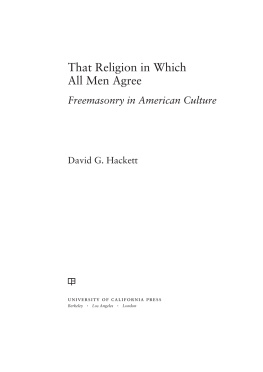
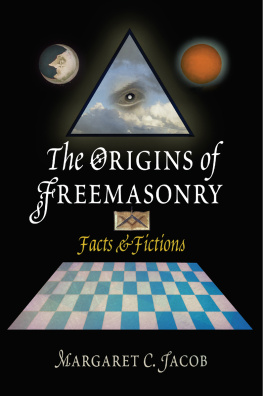
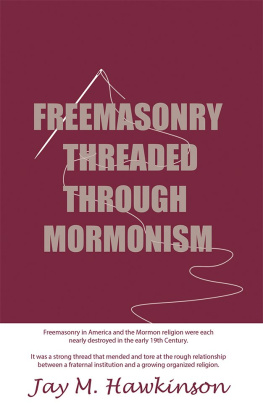
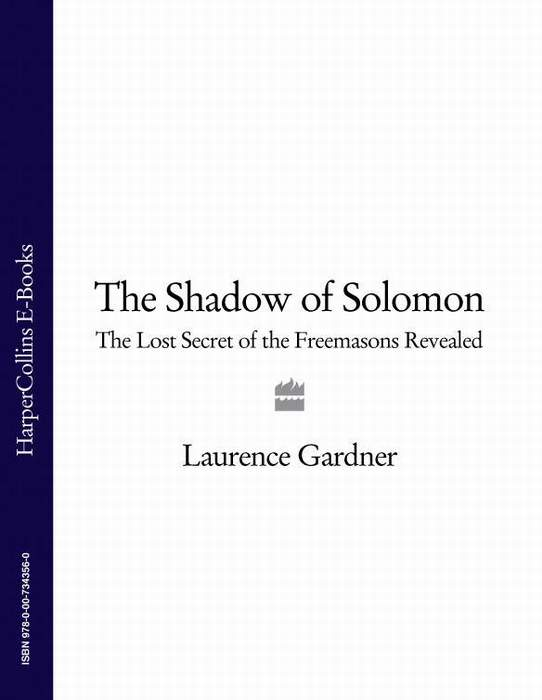
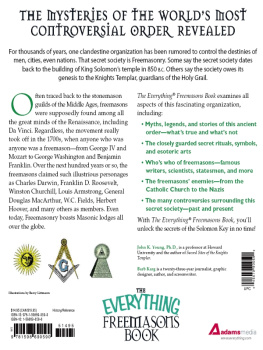
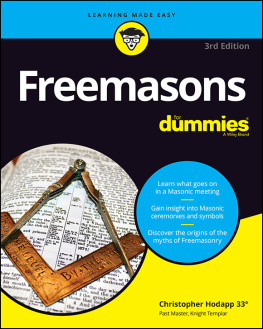
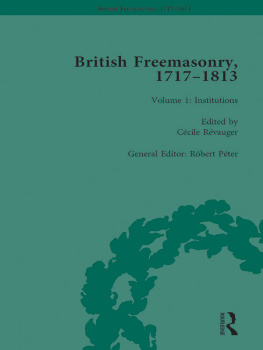

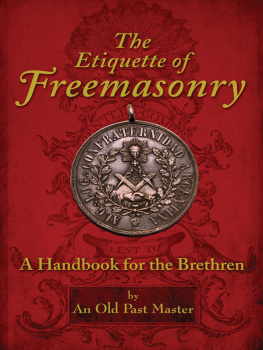
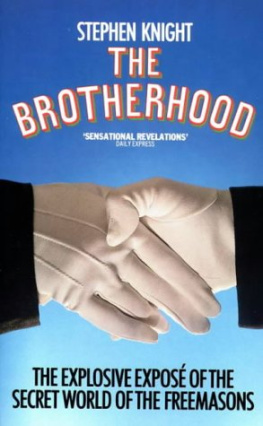


 The paper used in this publication meets the minimum requirements of American National Standard for Information SciencesPermanence of Paper for Printed Library Materials, ANSI/NISO Z39.48-1992.
The paper used in this publication meets the minimum requirements of American National Standard for Information SciencesPermanence of Paper for Printed Library Materials, ANSI/NISO Z39.48-1992.